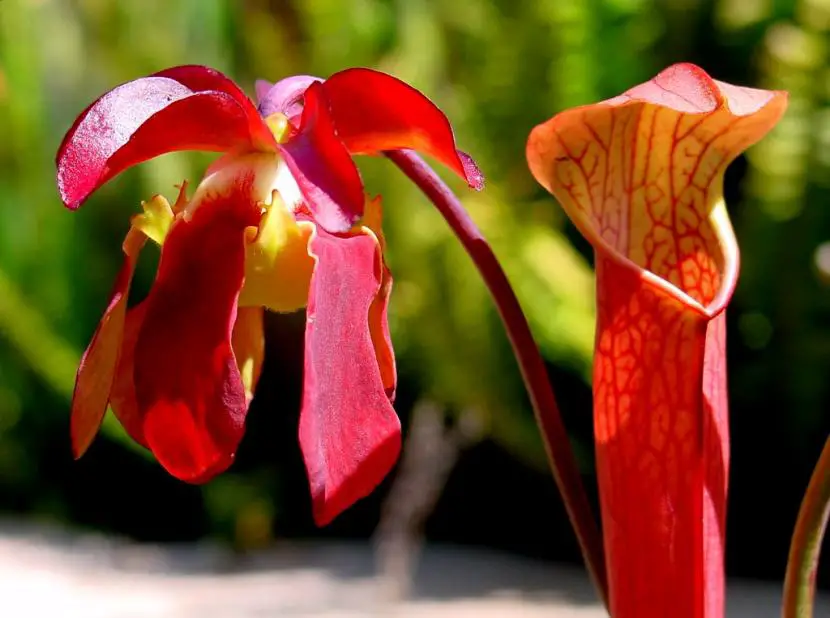
sarracenia rubra
Our carnivorous plants They are a type of plants that more easily attract attention, both adults and children. Some, like the Dionea, have mouth-shaped traps with “teeth”; others, such as Sarracenia, have modified leaves that grow in a “tube” shape; others, like the Nepenthes, have nevertheless chosen to grow a jug on the tips of the leaves, starting from the midrib.
It is said that the beware of carnivores It is complicated, but today we are going to show you that this statement is not entirely true. The trick is in water properly. And we will talk about that, about how and when these wonderful plants are watered.

Pinguicula
But before talking about irrigation, we will first talk about the substrate and the location, since the frequency of irrigation will vary according to the place where we have our carnivoreand also the type of land that we have used to plant it.
Substratum
The substratum that these plants need must be composed of unfertilized blond peat, mixed with perlite or any other type of material that facilitates drainage. The blond peat by itself, once it dries, is compacted, and to rehydrate it, the pot must be put in a bucket or in a deep dish with water.
Pearlite (or any material that facilitates drainage) it is especially important in areas where it rains a lot. Although carnivores are plants that live near swamps and others, when they are in a pot, fungi can appear which can damage the plant.
Location
Usually all they will have to be in full sunexcept for: Nepenthes, Drosera, Pinguicula. Special mention deserve the Drosophyllum, Heliamphora, Darlingtonia. These genera may be in full sun. We only live in a temperate climate, where the sun is not very intense; In hot and hot climates we must protect them from the sun with a shading mesh, for example.

Sundew spatulata
Irrigation
Now that we know where to place our carnivore and what substrate to use, let’s move on to irrigation. The irrigation water should only be: rain water, osmosis or distilled water. We will use tap water if it is drinking water, very soft.
During the growing season, that is, in spring and summer (even autumn in hot climates), watering should be frequent. Depending on the rainfall in our area, we will have to water more or less. What is important is that we prevent the substrate from drying out. For this we can place a plate (or even more advisable: put the pot inside a tupper) to which we will put clay balls for example, so that the plant can absorb the water, but the roots cannot have any contact. with bacteria that may form on the plate. Another option is not to put anything on the plate, but to wash it from time to time to keep it clean and free of bacteria and / or fungi.
When the temperature drops below 10º, we will start to water 2-3 times a week, and we will decrease the risks As winter approaches If there are mild frosts, we must protect the plants most sensitive to the cold, such as Nepenthes.
We hope you enjoy your carnivorous plants!

